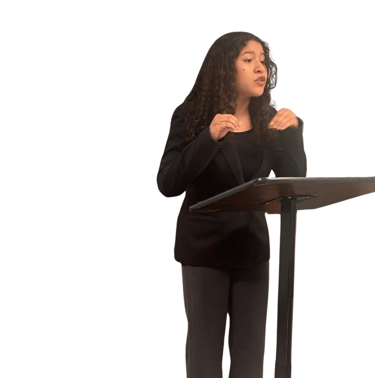Debate
We focus on two types of debate for competing
Lincoln Douglas Value Debate and Team Policy Debate.
Resolution: A resolution is a statement that proposes a policy change, and the debate focuses on whether this change should be implemented.
Affirmative: The affirmative team argues in favor of the resolution, typically presenting a plan to implement the policy change.
Negative: The negative team argues against the resolution, presenting reasons why the policy change should not be implemented.
Speeches: The debate format includes constructive speeches, cross-examination periods, and rebuttal speeches.
Evidence: Policy debate heavily relies on evidence to support arguments, requiring extensive research on the topic.
Strategy: Debaters must develop logical arguments, anticipate counterarguments, and strategically analyze their opponents' positions.
Team Policy Debate


Constructive Speeches: Each debater presents their main arguments and supporting evidence.
Cross-Examination: A period where the opposing team can question the speaker on their arguments and evidence.
Rebuttal Speeches: Debaters respond to the arguments made by the opposing team, synthesizing the debate and highlighting key issues.
Important Considerations:
Civility: Debaters are expected to be respectful and professional throughout the debate.
Evidence: Evidence is crucial for supporting arguments, and debaters must be able to present and defend their evidence.
Preparation: Thorough preparation, including research and strategic planning, is essential for success in policy debate.
Judge's Role: Judges evaluate the arguments, evidence, and overall presentation to determine the winner.
Policy discussion consists of two teams, affirmative and negative, arguing a resolution that seeks a change in policy. The affirmative side advocates for the resolution and presents a strategy to implement it, while the negative team opposes it, citing potential issues. The debate framework consists of constructive speeches, cross-examination, and rebuttals, each with its own time restriction. Policy debate necessitates considerable study, evidence presentation, and strategic thinking. Key Elements of Policy Debate: Teams consisted of two debaters (one affirmative and one negative).
Structure of a Team Policy Debate
Lincoln Douglas Debate
Lincoln-Douglas (LD) debate is a one-on-one format that emphasizes values and ethics over policy. Here's an overview of how it works and the rules that typically apply.
Resolution: Each round centers around a resolution, which is a statement that debaters must affirm or negate. Resolutions often involve moral or philosophical issues.
Key Rules and Guidelines
Time Limits: Each speech has a designated time limit, and debaters must adhere to these limits. Time management is crucial.
Contentions: Debaters present arguments (contentions) supporting their position, which may include definitions, value frameworks, and evidence.
Cross-Examination: After each constructive speech, the opposing debater has a chance to ask questions. This is an opportunity to clarify arguments and challenge points made.
Framework: The affirmative often presents a value framework that guides the debate, while the negative may challenge or counter this framework.
Evidence and Sources: Debaters should support their arguments with evidence, including statistics, quotes, and examples. Proper citation of sources is encouraged.
Flowing: Debaters often use a flowing method to keep track of arguments presented during the debate. This helps in organizing responses and rebuttals.
Judging Criteria: Judges evaluate rounds based on the persuasiveness of arguments, clarity, organization, and adherence to the rules. The ability to respond to the opponent's arguments is also Important.
Ethical Considerations: LD debate emphasizes ethical reasoning. Debaters should strive for respectful discourse and avoiding personal attacks.
Structure of Lincoln-Douglas Debate









